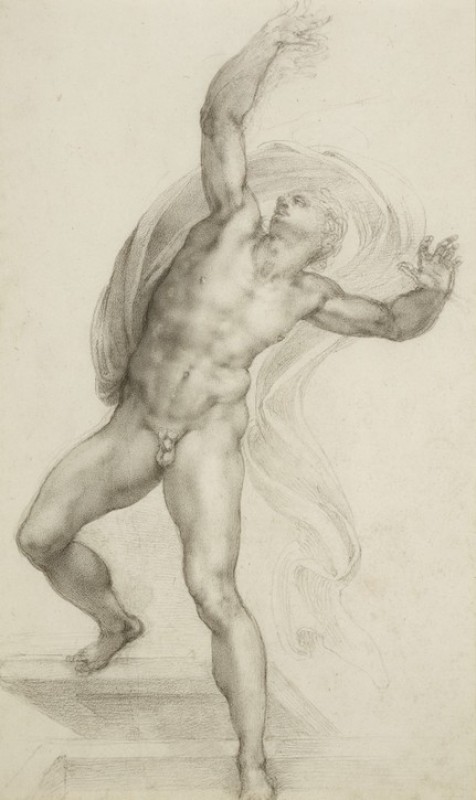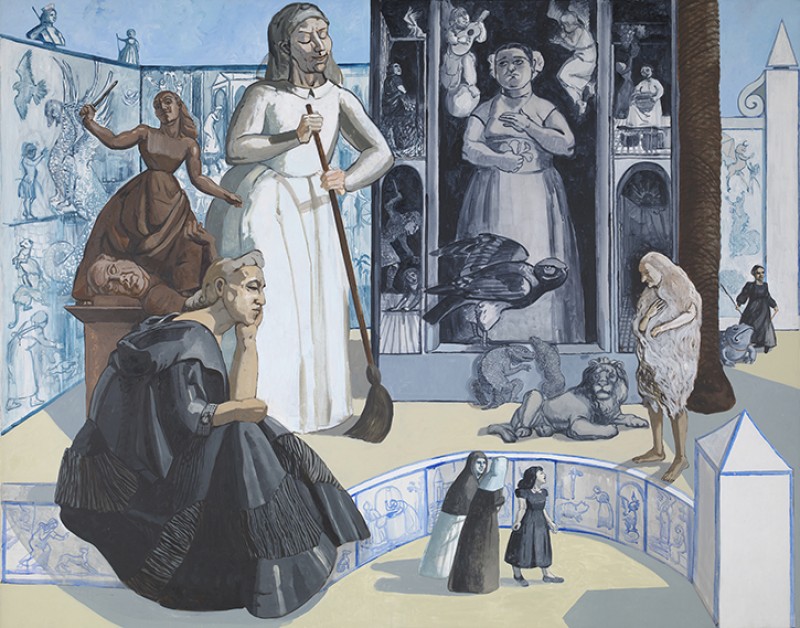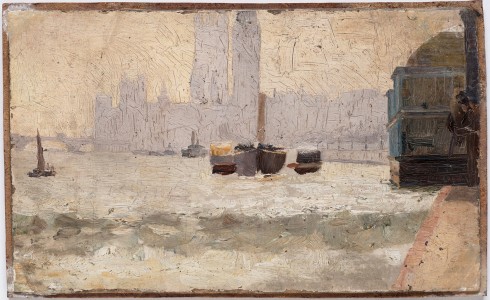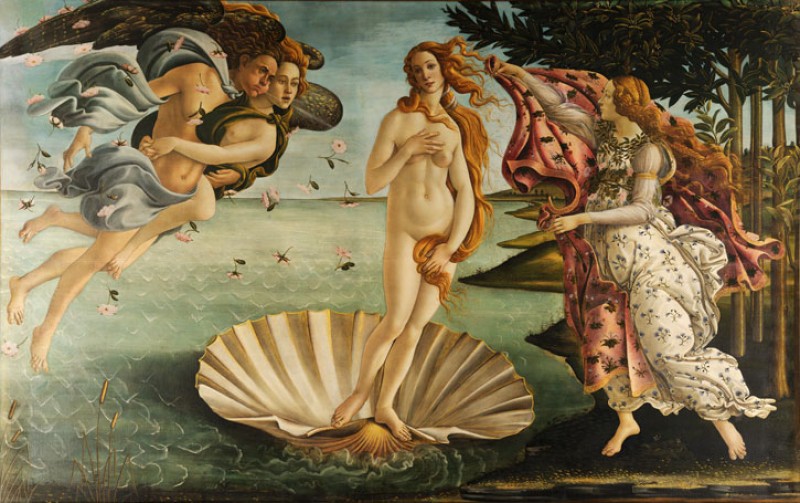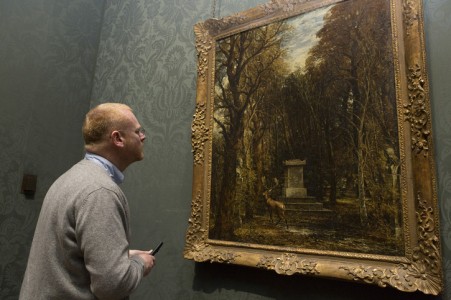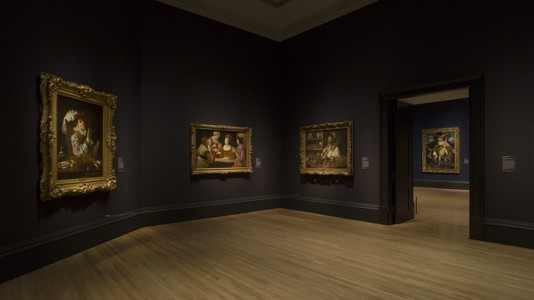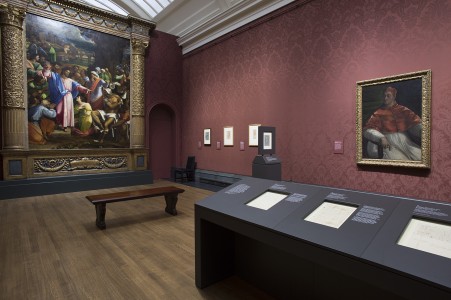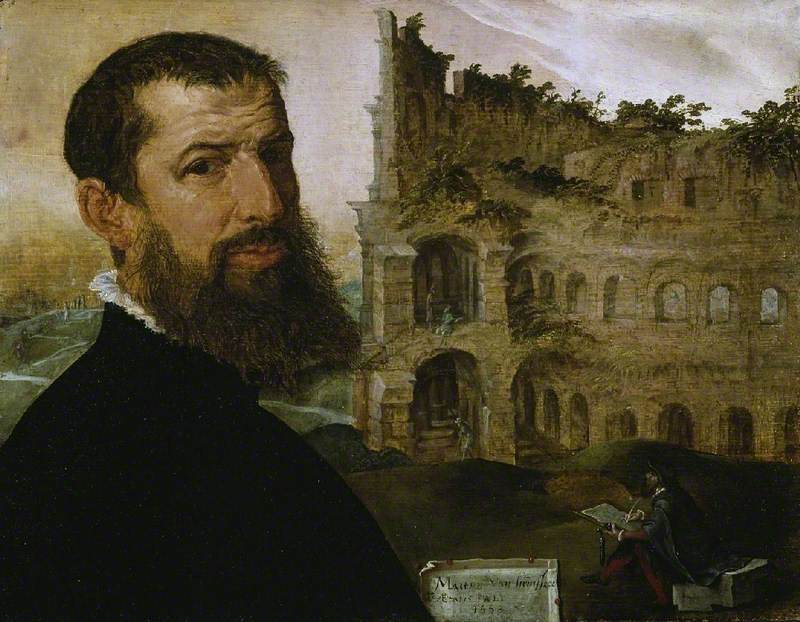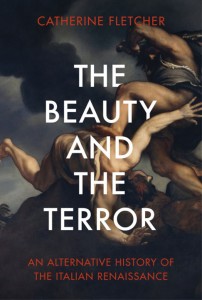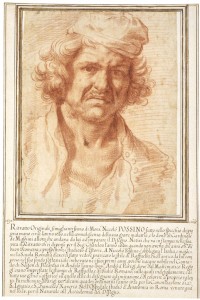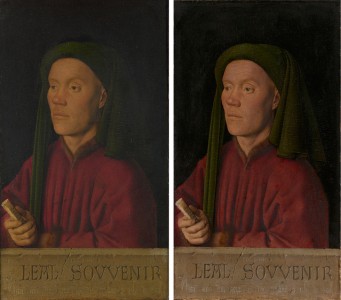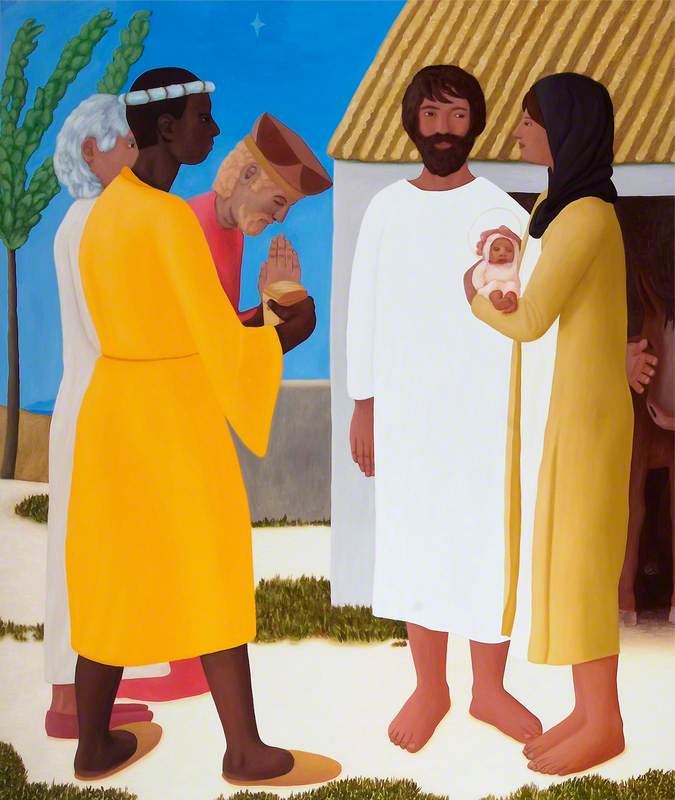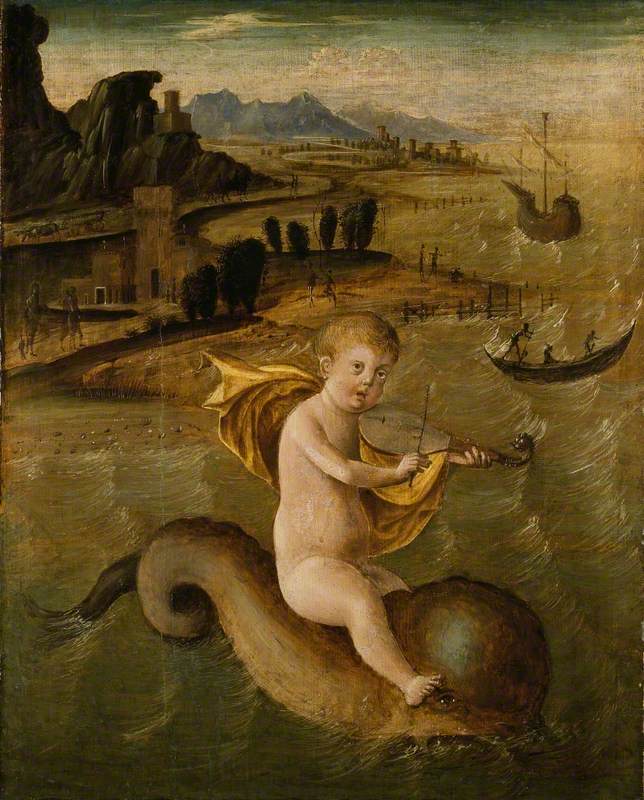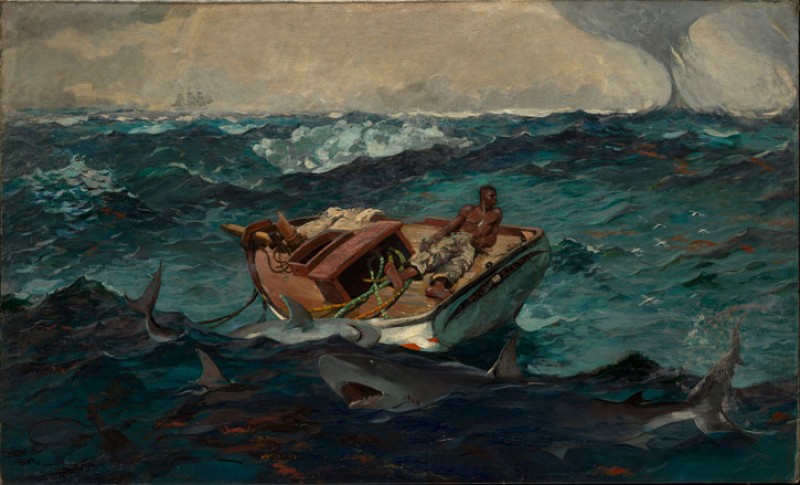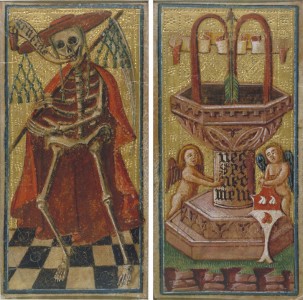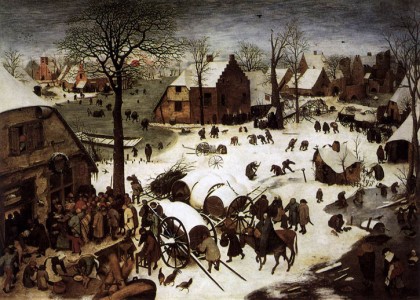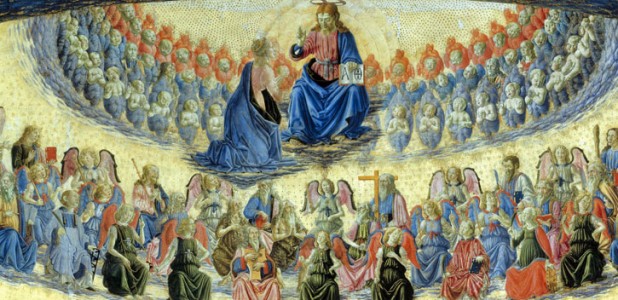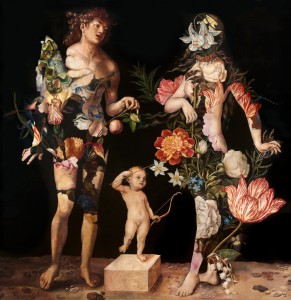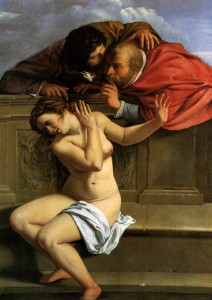Five hundred years ago, in northern Italy, the roots of modern art were being laid by two painters. Andrea Mantegna and Giovanni Bellini are two of the greatest artists who've ever lived. They were close contemporaries, sometimes rivals, and they were brothers-in-law. Each of them represents something new in art. This week, we open at The National Gallery the first exhibition to examine fully their artistic relationship, and the impact it had on western art.
Andrea Mantegna, born outside the university city of Padua in 1431, didn’t come from an educated background. His father was a carpenter, but he ended his life in 1506 as a gentleman, the court painter of the Gonzaga family, rulers of Mantua – where he lived and worked from 1460. He’s the epitome of the intellectual artist: he makes
Mantegna was a consummate storyteller. In his hands the unbelievable becomes credible. He specialised in creating powerful visions of classical Rome, such as the nine Triumphs of Caesar now in the collection of Her Majesty the Queen. He was a Baroque painter two centuries before the Baroque.
The Descent of Christ into Limbo
c.1475–1480
Giovanni Bellini (1431/1436–1516) 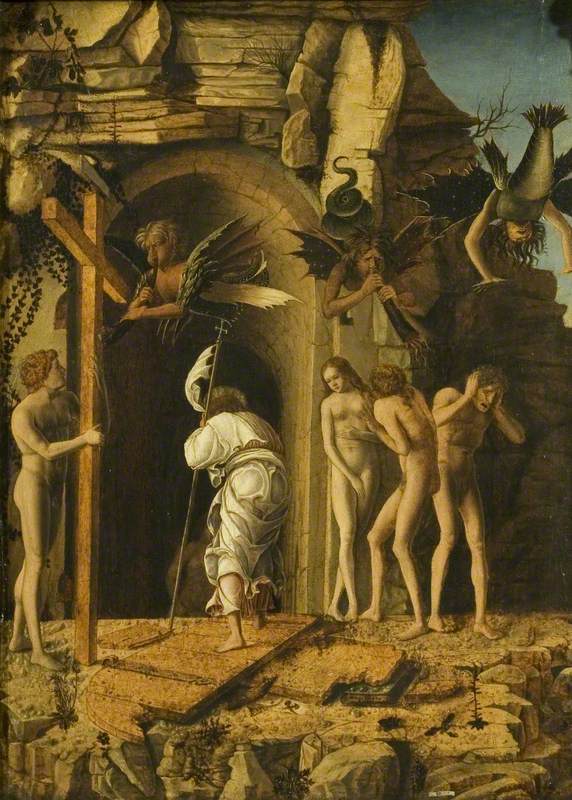
Bellini, on the other hand, was born into artistic royalty in Venice, at that time the most important commercial centre in Europe. His father, Jacopo, was a celebrated and successful painter. The Bellini family were Venetian citizens (
Bellini grew up an accepted member of this family – even if he was, as many scholars believe, illegitimate. Like his elder brother Gentile, he became a painter, and a key part of the leading painting dynasty in this great city, at a time when artists’ lives were dominated by family relationships.
Bellini, the poetic interpreter of the natural world, was the first artist to systematically use light and landscape to convey emotion and meaning. According to Marco Boschini, the Venetian painter and writer who looked back at his achievement a century and a half later, Bellini’s manner of painting was ‘a new springtime for the whole world’. For Bellini, the subject of his paintings matters less than the way they make you feel.
Mantegna and Bellini were very different artists but they had a close family connection. In 1453, Mantegna married Bellini’s sister,
A Bird on a Branch Catching a Fly
c.1480, pen & brown ink by Andrea Mantegna (c.1431–1506) 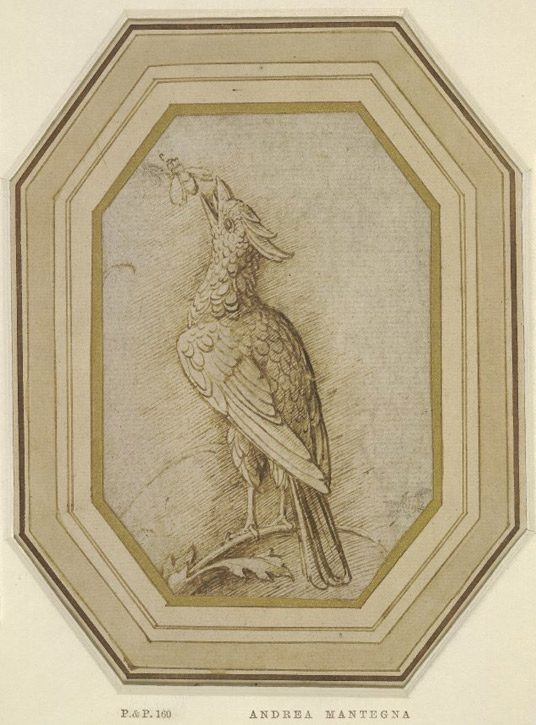
It’s not easy to pull off exhibitions of artists who died over 500 years ago. Many works have been destroyed, and those that do survive are among the most precious possessions of the museums or collectors who own them. With my co-curators, Dagmar Korbacher, Neville Rowley (from the Berlin State Museums) and Sarah Vowles (from the British Museum), I’ve been working for many years to make this exhibition happen. The National Gallery’s partnership with the Staatliche Museen
This is a once-in-a-lifetime exhibition that will not happen again. Over a third of the 90 works in this exhibition haven’t been exhibited publicly in London before. Yet Mantegna and Bellini aren’t – yet – household names. They’re often seen as
I’ve been lucky enough to have curated many exhibitions in my life. But so far this is the one that’s been most personal for me. It was through looking at a detail of Bellini’s The Agony in the Garden on a concert poster as a teenager that I was first drawn to art history. If I’ve got one hope for this exhibition, it’s that it will introduce new audiences to these painters who are among the very greatest and most influential artists who’ve ever lived.
Caroline Campbell, Director of Collections and Research, The National Gallery, London
'Mantegna and Bellini' was on display at The National Gallery from 1st October 2018 to 27th January 2019.



